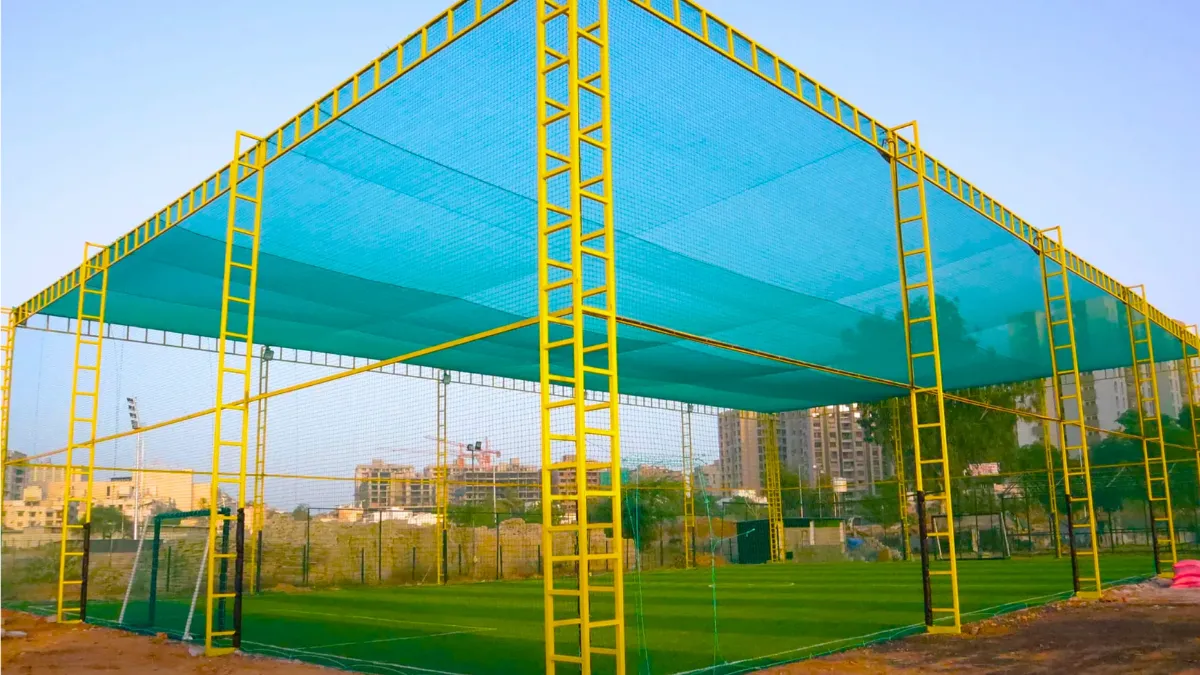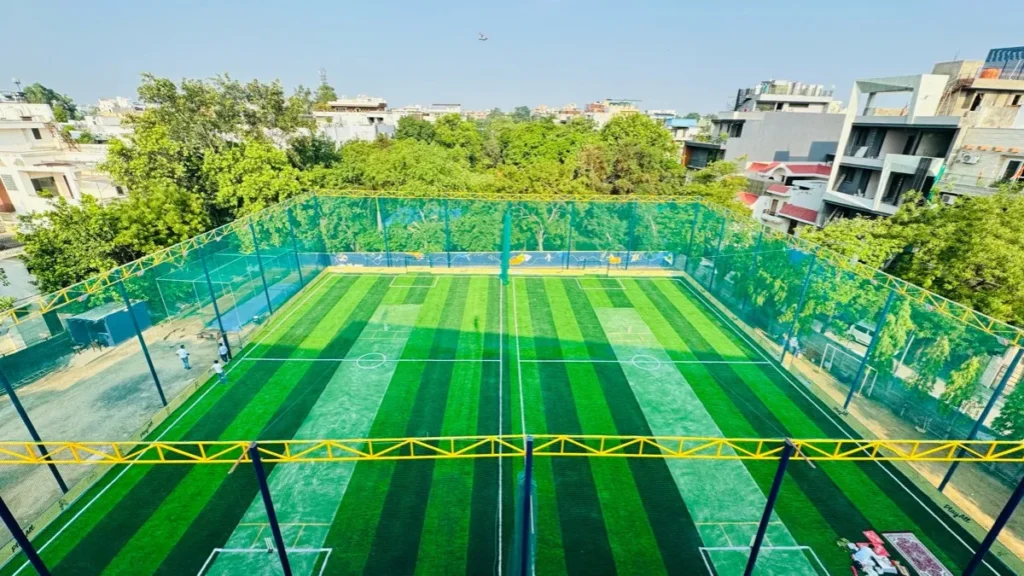Box Cricket Ground Size: Complete Guide for Setup and Play

Box cricket ground size is one of the most important factors to consider when setting up or choosing a facility for playing this fast-paced version of the game. Whether you’re a sports facility owner, a cricket enthusiast, or planning a local tournament, knowing the ideal dimensions and layout can make a huge difference in the quality of play and player experience.
In this article, we’ll break down everything you need to know about the standard and customizable sizes of box cricket grounds, how dimensions affect gameplay, and tips for choosing the right layout for your space.
What Is Box Cricket?
Box cricket is a compact, indoor or turf-based version of traditional cricket. It is typically played in a confined area enclosed by nets or walls, with smaller teams, usually ranging from 6 to 8 players per side. The format is designed for fast-paced action, shorter match durations, and greater accessibility for urban areas where open grounds are limited.
Standard Box Cricket Ground Size

There is no single official governing body for box cricket globally, so the box cricket ground size can vary slightly based on the venue. However, most professionally managed box cricket facilities follow a fairly standard range of dimensions that work best for gameplay, safety, and fairness.
Read also : Cricket Turf Near Me: How to Find the Best Turf for Your Next Match
Here’s a table summarizing the most common measurements used for box cricket grounds:
| Component | Standard Dimensions | Notes |
|---|---|---|
| Total Ground Length | 45 to 50 feet | From back net to back net |
| Total Ground Width | 25 to 30 feet | From one side net to the other |
| Pitch Length | 18 to 22 yards | Can be adjusted slightly based on space |
| Boundary Height (Netting) | 10 to 12 feet | Netting height to contain the ball |
| Bowling Crease to Stumps | 22 yards (standard) | Same as traditional cricket for better balance |
| Non-striker’s End | 18–20 yards from striker’s end | Optional to reduce for tighter formats |
Why Box Cricket Ground Size Matters
The size of a box cricket ground directly influences the nature of the game. A few feet more or less can change how aggressive or defensive a team needs to be. Here’s why getting the dimensions right is crucial:
- Gameplay Balance: Too small a ground favors batting heavily, while too large a ground can slow the game down and take away the thrill.
- Safety: Proper spacing ensures players don’t collide with nets, walls, or each other.
- Ball Behavior: In box cricket, walls and nets are often considered “live”, so the dimensions affect how the ball bounces and rebounds.
- Rule Clarity: A well-sized ground helps in maintaining uniformity in rules like sixes, boundaries, and dismissals.
- Spectator Experience: Grounds with appropriate space allow for better viewing angles and overall enjoyment.
Read also : What is Box Cricket? Everything You Need to Know About This Urban Cricket Sensation
Customizing the Box Cricket Ground Size
While the standard measurements work well for most scenarios, you might need to adapt based on available space, player age group, or match format. Here are a few customization tips:
- Smaller Areas (Indoor Complexes): Reduce the pitch length to 18 yards, and ground length to 40 feet. Ensure safety padding and wall-friendly rules.
- Youth Games: Use shorter pitches and slightly narrower widths to make the game fun and accessible for kids.
- Multi-purpose Turf Setups: If your space is shared with other sports, consider a modular net system that can be adjusted per match.
- Corporate Tournaments: You can allow flexible boundary rules (e.g., rebound boundaries) to add fun and unpredictability.
Box Cricket Rules Affected by Ground Size
Several rules are either created or adapted based on the box cricket ground size:
- Six and Four Rules: In many formats, hitting the back net or side walls on the full may count as six or four.
- Rebound Play: Balls bouncing off nets or walls often remain in play, keeping the game dynamic.
- No LBW: Given the compact area, LBW is generally excluded to avoid disputes.
- Bowling Restrictions: Shorter run-ups are usually enforced due to limited space.
- Catch Dismissals: Catches off rebounds are often counted, depending on the league’s specific rules.
Ideal Size for Different Use Cases
| Use Case | Recommended Ground Size | Reasoning |
|---|---|---|
| Professional Turf | 50 x 30 feet | Allows full competitive gameplay with standard rules |
| Indoor Recreational | 40 x 25 feet | Compact and ideal for 6-a-side fun matches |
| School Matches | 35 x 20 feet | Safe and easy to manage for children |
| Corporate Leagues | 45 x 25 feet | Good balance of space and convenience |
Final Thoughts
Understanding the box cricket ground size is essential for delivering a safe, enjoyable, and well-balanced cricket experience. While there’s room for flexibility, sticking within the standard dimensions ensures smoother gameplay and easier implementation of consistent rules.
Whether you’re building a new turf or organizing a weekend league, using the right size and layout will maximize the fun and fairness of box cricket. Always prioritize player safety, space management, and gameplay dynamics when deciding on your ground dimensions.
Would you like help drafting rules or setting up your own box cricket ground layout?
